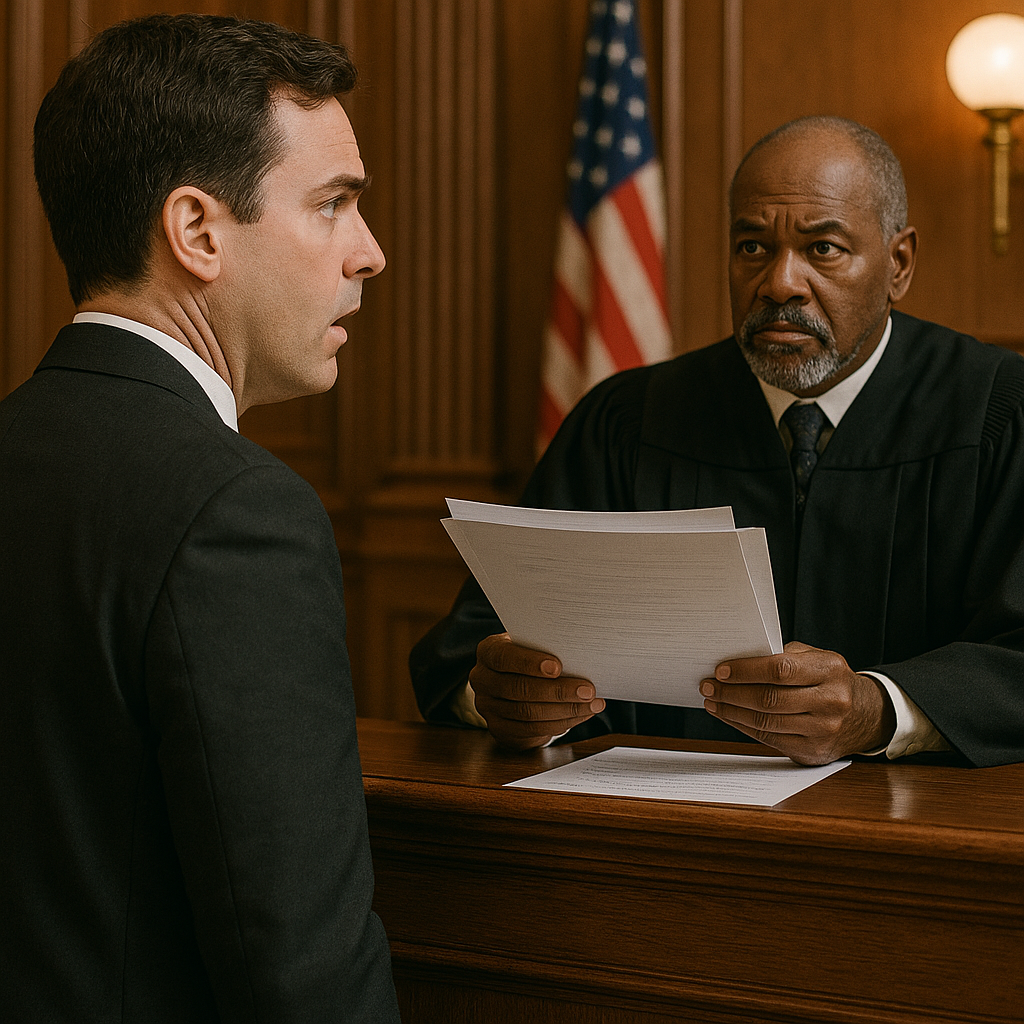(The recent State Farm Lloyds v Johnson decision from the Texas Supreme Court has generated a lot of debate within our firm. It is an important case, but it is important to remember that the Court warned that the record was not developed sufficiently to rule upon State Farm’s arguments. Courts do not generally provide advisory opinions, and this opinion is particularly interesting because it addresses several hypothetical scenarios and how the law should be applied to each).
The facts involve a hailstorm that moved through Plano, Texas, in April of 2003, damaging the roof of Becky Ann Johnson’s home. She filed a claim under her homeowners insurance policy with State Farm. State Farm’s inspector concluded that hail damaged only the ridgeline of the roof, and estimated repair costs at $499.50 (less than the policy’s $ 1,477 deductible). Johnson’s roofing contractor concluded that the entire roof needed to be replaced at a cost exceeding $13,000. (These facts and degree of disagreement seem typical even for the losses we have encountered following Hurricane Ike).
Johnson demanded appraisal of the "amount of loss" pursuant to the appraisal provision in her standard-form policy, but State Farm refused to participate in an appraisal. State Farm argued that the parties’ dispute concerned causation and not "amount of loss," so that appraisal was not appropriate. Johnson filed suit, seeking to compel appraisal. On cross-motions for summary judgment, the trial court agreed with State Farm that no appraisal was warranted. The court of appeals reversed. The Texas Supreme Court affirmed the court of appeals.
First, the Court discussed the history of appraisal and its legal ramifications of it. It found that appraisal clauses existed since the late 1800s, and courts have uniformly enforced them. Appraisal does not divest the court of jurisdiction, it merely binds the parties to have the extent or amount of the loss determined in a particular way. Liability for such loss is determined, if necessary, by the courts. While appraisal clauses are rarely drafted with specificity, it is generally understood that the scope of appraisal is damages or valuation of a loss, not liability.
Curiously, the Court interchanged two very different proceedings as if they were one: appraisal and arbitration. The two are very different, yet it seemed to suggest that appraisal is legally sound (although calling it arbitration) because it only involves matters of value, with the courts reserving review of the liability:
“In 1897, we repeated this distinction between damage questions for appraisers and liability questions for the courts: It seems to be generally held that a stipulation that the question of liability shall be determined by arbitration is contrary to public policy and void, but it is otherwise, as we have seen, as to the ascertainment of the amount of the loss. There is neither repugnancy nor inconsistency in leaving the former question to the courts when the liability is disputed, and at the same time in providing that the amount of the recovery shall be settled by arbitration. …
…
While policies hostile to arbitration have largely been preempted,… limiting appraisal to damages and not liability is surely still correct. … Most appraisal clauses do not define the scope of appraisal in detail (as is the case here), but the ordinary meaning of the words serves that purpose…. The word "appraisal" itself generally means "[t]he determination of what constitutes a fair price; valuation; estimation of worth." … The policy directs the appraisers to decide the "amount of loss," not to construe the policy or decide whether the insurer should pay. … And the policy requires each party to select a "competent, disinterested appraiser," not a lawyer or insurance expert. …”
State Farm Lloyds v. Johnson, 2009 Tex. LEXIS 470, 7-8 (Tex. July 3, 2009).
Given this language, one can expect insurers in future cases to argue that appraisal cannot determine whether a peril caused damage, but only the value of damage. Don’t shoot me if you are a public adjuster or policyholder, I am telling you what you can probably expect in the event an insurer thinks it can prove that an appraisal panel included otherwise uncovered damage because the policy excluded damages caused by a certain peril.
Returning to the facts, State Farm argued that no appraisal was needed because appraisers cannot decide causation issues and State Farm disputed Johnson’s assertion that her shingles were damaged by hail. However, the Court noted that nothing in the record indicated the roof was damaged by anything other than hail. So, based on the record, the Supreme Court found that the trial court could not conclude as a matter of law that the parties’ dispute was about causation rather than something else.
Nevertheless, in discussing the issue the court noted that State Farm’s argument, if accepted, would eliminate the benefits of appraisal process in nearly every case:
"[A] dispute about how many shingles were damaged and needed replacing is surely a question for the appraisers. If the parties must agree on precisely which shingles have been damaged before there can be an appraisal, appraisals would hardly be necessary. What’s more, either party could avoid appraisal by simply picking a few extras. The cost of replacing shingles (or anything else) is a function of both price and number; appraisers must factor in both shingle prices and shingle numbers to decide the "amount of loss." To the extent the parties disagree which shingles needed replacing, that dispute would fall within the scope of appraisal."
Johnson, 2009 Tex. LEXIS 470 at * 12.
So here is the big question:
Did the Court mean the appraisal panel could determine which panels were damaged from hail and needed replacing, or whether they could determine which hail damaged panels needed replacing?
Your answer, very likely, depends on whether you are an insurer or insured. Yet, the Court rejected State Farm’s assertion that causation can never be an issue addressed by appraisal. It cited several circumstances when different types of damage occur to different items of property, and appraisers may have to decide the damage caused by each before the courts can decide liability.
For example, in Lundstrom v. United Servs. Auto. Ass’n-CIC, 192 S.W.3d 78, 89 (Tex. App.–Houston [14th Dist.] 2006, pet. denied), appraisers assessed $ 4,226.19 for damages due to water (a covered peril) but made no finding for damages due to mold (coverage was disputed). The Texas Court of Appeals rejected the argument that appraisal is barred "whenever causation factors into the award." The court affirmed the water damage award and rendered mold damage moot by finding no coverage. In this context, if courts could decide the amount of damage caused by each peril, there would be no damage questions left for the appraisers. The same would be true in Johnson’s case, where when the causation question involved separating loss due to a covered event from a property’s pre-existing condition.
Indeed, the Court noted that appraisers consider causation in every case, at least as an initial matter. An appraisal is for damages caused by a specific occurrence, not every repair a home might need.
The Court concluded for several reasons that judicial review of appraisals should not occur until after the appraisal has occurred. It noted that appraisal is intended to take place before suit is filed and noted that several courts have held it is a condition precedent to suit. Appraisals require no attorneys, no lawsuits, no pleadings, no subpoenas, and no hearings. The Court assumed that appraisals are likely completed in less time and expense than it would take to file motions contesting it.
The Court reasoned that if it were to permit litigation about the scope of appraisal, it would dramatically impact and delay Texas insurance practice. Yet, it assumed that appraisal can most often be structured in a way that decides the amount of loss without deciding any liability questions. How that is going to be accomplished was not fully explained, but here is the quote regarding that procedure:
“When divisible losses are involved, appraisers can decide the cost to repair each without deciding who must pay for it. When an insurer denies coverage, appraisers can still set the amount of loss in case the insurer turns out to be wrong.”
I can imagine the disagreements and questions coming into our office about what this means. But as I read it, the Court has suggested that appraisers can segregate covered and disputably covered items with awards of values for each. This sounds great, but is largely unworkable. It may harm policyholders as appraisers for insurers argue causation and ask for segregation, to which an umpire may agree.
I had this situation once in Mississippi. It did not work. The panel argued about each little item on numerous structures as to value and causation. All the insurer’s appraiser did was say that virtually all the items were not damaged by a covered peril of wind, but made the panel value all items claiming they were not covered. Then, we were left with amounts that could not be explained as to what exactly was agreed to as part of a covered amount and what was disagreed to because awards do not get that precise unless you draw it as a picture with dollars for each.
On large losses, the cost and time of doing this procedure is not fast or inexpensive. It is a colossal waste of time and money that will result in a very ambiguous result for a judge and jury to decipher. You can get down to the smallest of details of covered and uncovered parts of a large structure and then force the policyholder to sort them all out later through litigation. This is difficult. Since Texas law places coverage as a burden of the policyholder, it makes the job twice as difficult because the awards will be ambiguous in large cases.
The Court has created something of a procedure nobody has ever done. Except for my one attempt between my client and one poor insurer, the Court made up something entirely new and unique despite other states having appraisal work fairly well. While we did resolve the case, it was obvious such a procedure simply cannot work in large cases with multiple disagreements of various causes. Here, the decision does not help the policyholders. The Court, albeit well meaning, is making up something found nowhere in appraisal law, arbitration law, or the policy.
The Court then assumed that the scant precedent involving disputes about the scope of appraisal suggested that appraisals generally resolve such disputes. If that is true, such reasoning suggests that litigating the scope of appraisal is wasteful and unnecessary. I am not so certain that insurers who feel they are paying damages caused by excluded perils are going to agree.
The logic is also subject to criticism because those cases simply did not go to appraisal—the insurer refused. Coverage cases exist because of a denial. Now, there will be the possibility that coverage cases will exist in the form of appraisal objections and reviews where evidence of what the panel considered plus the evidence of the causation of loss are in dispute. Trials of these coverage issues will be more time consuming, complex, and costly.
Finally, and in opposite to the prior suggestions of finality through resolution, the Court concluded that if an appraisal award is flawed, it can be remedied through legal process. The Court concluded:
“unless the "amount of loss" will never be needed (a difficult prediction when litigation has yet to begin), appraisals should generally go forward without preemptive intervention by the courts.”
Johnson, at *24.
The practical implications of this decision are subject to debate. For instance, is it good for policyholders to provide an insurer two chances to avoid or delay payment? The insurer could refuse to pay following an appraisal, claiming the scope of the appraisal exceeded the panel’s authority. I suspect that umpires and appraisers are then going to be subject to depositions and discovery to discover what motivated the award and determine exactly what was considered as caused by a covered peril leading to a wrong award.
I suggest that umpires and appraisers in Texas take care to keep everything involving an award. I suspect there could be a brand new era of "appraisal litigation" in Texas, as insurers or insureds fight about whether the panel delved into improper areas of coverage or refused to consider values because of coverage issues. One attorney in our firm was appalled at the idea, exclaiming, "I never let insurers depose appraisers and umpires!" To say the least, there are some strong feelings about what this decision means.
From the policyholder’s perspective, I am still not certain what to do in Texas regarding appraisal. Some public adjusters will provide legal advice to simply go into appraisal. In some instances, I would agree. In other situations, it may just drag out a long appraisal process that may be subject to a long court battle. Texas has a prompt payment statute that provides significant interest and penalties. Some underwriters, knowing that their case is weak, may try to avoid those penalties by suggesting that the policyholder go to appraisal, then go to appraisal–while still objecting because of alleged coverage issues.
So if appraisers and umpires want to be on a panel and decide matters, they better get ready to explain to my insurance defense buddies, like Steve Pate and his very capable crew from Fulbright and Jaworski, what and why they did things in an appraisal. One thing is certain, State Farm’s very bright and creative attorneys will have a long and detailed record next time this issue goes to an appellate court in Texas. This case may have read very differently if there had been a full record indicating that causation was considered:
“A. Is this a causation dispute?
First, the record does not prove that the dispute here is about causation.
…
On appeal, State Farm emphasizes it is disputing not just which shingles were damaged, but which were damaged by hail. But nothing in the summary judgment record establishes Johnson’s roof was damaged by anything else. In State Farm’s denial letter, its summary judgment motion, and even its briefs in this Court, there is neither evidence nor even a hint about what else caused the damage. The trial court could not conclude this was a causation dispute just because State Farm claimed it was.
Nor does the record conclusively establish that the parties’ dispute is solely about how much of the roof was damaged rather than how much needs to be replaced. Sometimes it may be unreasonable or even impossible to repair one part of a roof without replacing the whole…. The policy provides that State Farm will pay reasonable and necessary costs to "repair or replace" damaged property, and repair or replacement is an "amount of loss" question for the appraisers…. On this record, the trial court … could not conclude as a matter of law that the parties’ dispute was about causation rather than something else.”
State Farm Lloyds v. Johnson, 2009 Tex. LEXIS 470, 12-14 (Tex. July 3, 2009)
State Farm and other insurers will not make this mistake next time. They will certainly try to depose the appraisers to prove that coverage issues were determined. You can anticipate that the insurer’s appraiser will provide an affidavit to that effect detailing exactly how many non-covered cause dollars were included in an appraisal award.
So, every non-lawyer telling a policyholder that going to appraisal is going to be easy, quick, inexpensive, a way around causation and without attorneys better be getting ready for a dose of questioning about providing legal advice if the insurer disagrees with the appraisal outcome and files an action for review. It could end up as a legal slugfest over what and why decisions were made in and by a panel that considered evidentiary and discretionary matters coming to what they thought was a just award.
The most troubling language seeming to allow this discovery, usually unheard of in other jurisdictions, is this:
“This of course does not mean appraisers can rewrite the policy. No matter what the appraisers say, State Farm does not have to pay for repairs due to wear and tear or any other excluded peril because those perils are excluded. But whether the appraisers have gone beyond the damage questions entrusted to them will depend on the nature of the damage, the possible causes, the parties’ dispute, and the structure of the appraisal award (as discussed more fully below).”
As I have said before, I love Texas because Texans have a different perspective on things. Maybe this case is going to be the perfect fix for resolving insurance disputes, but it is hard to figure out how right now. I am going to go back and analyze each situation, and determine the best course for each client given their fact pattern and remedy available. If any other professional is doing something else, I would like to know the logic behind it.
Good luck and remember my rule about appraisal—win! Because, when the smoke clears in the Wild West, the dead don’t get a second chance.




